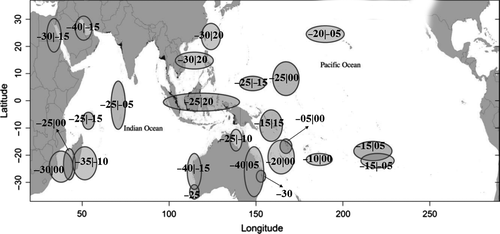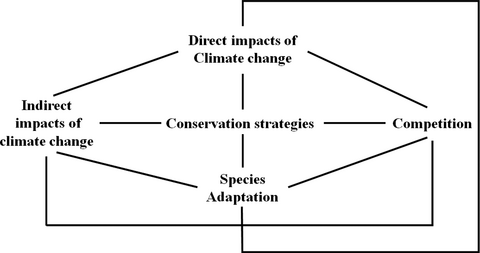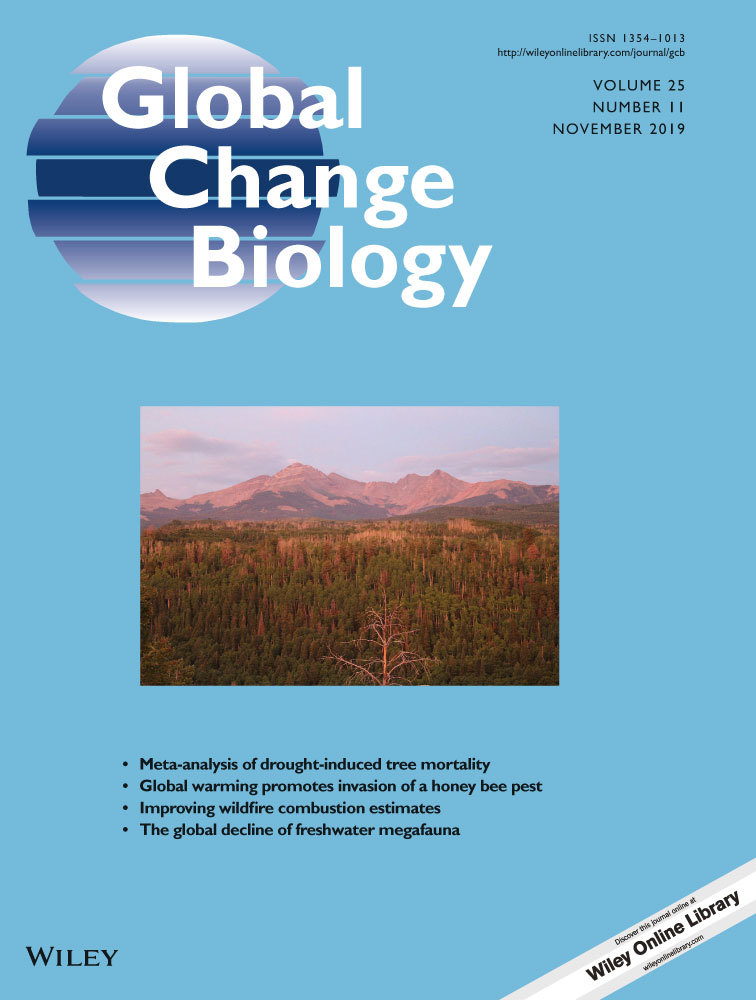Biological interactions: The overlooked aspects of marine climate change refugia
Graphical Abstract
This article emphasizes on biological interactions as an important overlooked criterion to better assess the chance of target marine species in potential refugia to survive climate change. It proposes future climate change refugia studies must consider the reciprocal interactions among climate change, biological factor, and conservation strategies.
Climate change refugia are currently considered an inseparable part of biological conservation in both marine and terrestrial ecosystems. However, our understanding of marine refugia effectiveness remains limited despite many valuable efforts made in recent years. Certain studies have suggested criteria to assess potential marine climate change refugia (e.g., Kavousi & Keppel, 2018), while others proposed specific refugia to conserve (e.g., Cacciapaglia & Van Woesik, 2016 and references therein). While I acknowledge that determining the most effective marine climate change refugia is an urgent necessary action to protect marine biota, I propose that ruling out biological interactions may result in far less accurate estimations of the effectiveness of potential long-term refugia and short-term refuges (defined by Keppel et al., 2012) for marine species, which could subsequently lead to overly optimistic ecosystem management strategies.
The high level of uncertainty associated with climate change impacts on marine ecosystems remains an obstacle to establishing long-term conservation plans (Beyer et al., 2018) and is a hindrance to identifying effective marine climate change refugia. While refugia can provide protection from some climatic changes for target species, there remains a lack of data directly assessing how potential refugia and their species respond to the indirect impacts of climate change, such as climate change-induced and -intensified biological phenomena (e.g., the outbreak of infectious diseases, harmful algal blooms, invasive species, or intensified predation). For instance, global projections suggest that warming-induced coral diseases will be a major driver of coral reef declines, equal to that of coral bleaching (Maynard et al., 2015). The increased temperatures causing the former either have already started or will start in the coming decades, primarily before the onset of annual coral bleaching for the majority of coral reefs (Maynard et al., 2015), which includes nearly all proposed large-scale coral reef global warming refugia (Figure 1). Since marine refugia are not strongly decoupled from their surroundings (Kavousi & Keppel, 2018), biological threats in refugia and refuges can sometimes appear with catastrophic impacts (see e.g., Bongaerts, Ridgway, Sampayo, & Hoegh-Guldberg, 2010). Notably, there does not appear to be a practical barrier to maintaining refugial capacities—the ability of refugia to mitigate the magnitude, duration, and increased rate of stressors—under the indirect impacts of climate change.

Like all other environments, refugia are prone to competition over space, light, and other factors. Small size, novel biotic interactions (e.g., dispersal of species into an ex situ refugium that would be outside a species’ range, as defined by Keppel et al., 2012), and size shrinkage due to climate change (e.g., Assis, Araújo, & Serrão, 2018) can intensify competition in refugia, which may lead to competitive exclusion under persistent climate change (Mclaughlin et al., 2017). Evidently, any species that is unable to cope with the negative effects of climate change and must abandon their original unsuitable habitats will strive to benefit from any potential refugium that they manage to reach. Those species can be historical competitors (e.g., reef corals and macroalgae) or novel competitors (endemic and invasive species). Therefore, refugia must either be available for colonization or support the persistence of existing communities (Mclaughlin et al., 2017).
To date, three major type refugia for marine species—including higher latitudes, deep areas, and upwelling regions—are suggested to act as global warming refugia for many species, including reef corals, macroalgae, and kelp. However, all of these regions are generally predicted to experience higher rates of intensified ocean acidification in the coming decades (Gattuso & Hansson, 2011). Thus, the direct negative effects of ocean acidification may favor some species, such as mat-forming algae, in competition with ecosystem engineers such as reef-building coral and kelp (Connell, Kroeker, Fabricius, Kline, & Russell, 2013). As a result, competition within refugia would become even more complicated. Therefore, how competition will shape communities within marine refugia may not only be determined by the refugium limitations and competition level, but also by the rate in which climatic change (and other non-climate factors) can alter the competition capabilities of the species involved.
Overall, changes in biotic interactions under climate change represent a known cause of species extinction (Blois, Zarnetske, Fitzpatrick, & Finnegan, 2013), thus they cannot be ignored in climate change refugia studies. Such biotic interactions are even more important than the direct abiotic impacts of climate change (Ockendon et al., 2014). Therefore, the identification of effective climate change refugia/refuges without considering biological interactions—particularly those induced and/or intensified by climate change such as competition, marine diseases, and phytoplankton blooms—seems to be simplistic. Although, such interactions will undoubtedly increase the complexity and practicality of projections, their implications are, in my opinion, inevitable. To support my claim, I exemplify the Persian Gulf, which has been suggested to act as a coral reef refugium against global warming by the year 2100 (Figure 1; Cacciapaglia & Van Woesik, 2016). However, along with multiple mass bleaching events, the Persian Gulf has already experienced mass mortalities of corals due to diseases and phytoplankton blooms (Riegl, Bruckner, Samimi-Namin, & Purkis, 2012; Riegl et al., 2018 and references therein). Therefore, I suggest that simply pinpointing potential marine climate change refugia based on their capacities to buffer global warming or ocean acidification (i.e., the direct impacts of climate change) should not be incorporated into modern conservation frameworks and marine spatial planning initiatives. Consequently, I propose that to be realistic and reliable, future climate change refugia studies must consider the reciprocal interactions among climate change, biological factor and conservation strategies (Figure 2). Without effective management plans, even the least vulnerable ecosystems may be at risk (see Beyer et al., 2018). Such strategies can also reduce non-climate change stressors, which should not be ignored while identifying marine refugia (Kavousi & Keppel, 2018). I emphasize my understanding of how the suggested study structure can be complicated, time-consuming, and costly to perform. However, the painful truth is that conserving our oceans against climate change is complicated by multilevel impacts that require the application of complex, multilevel research methodologies and management strategies.






